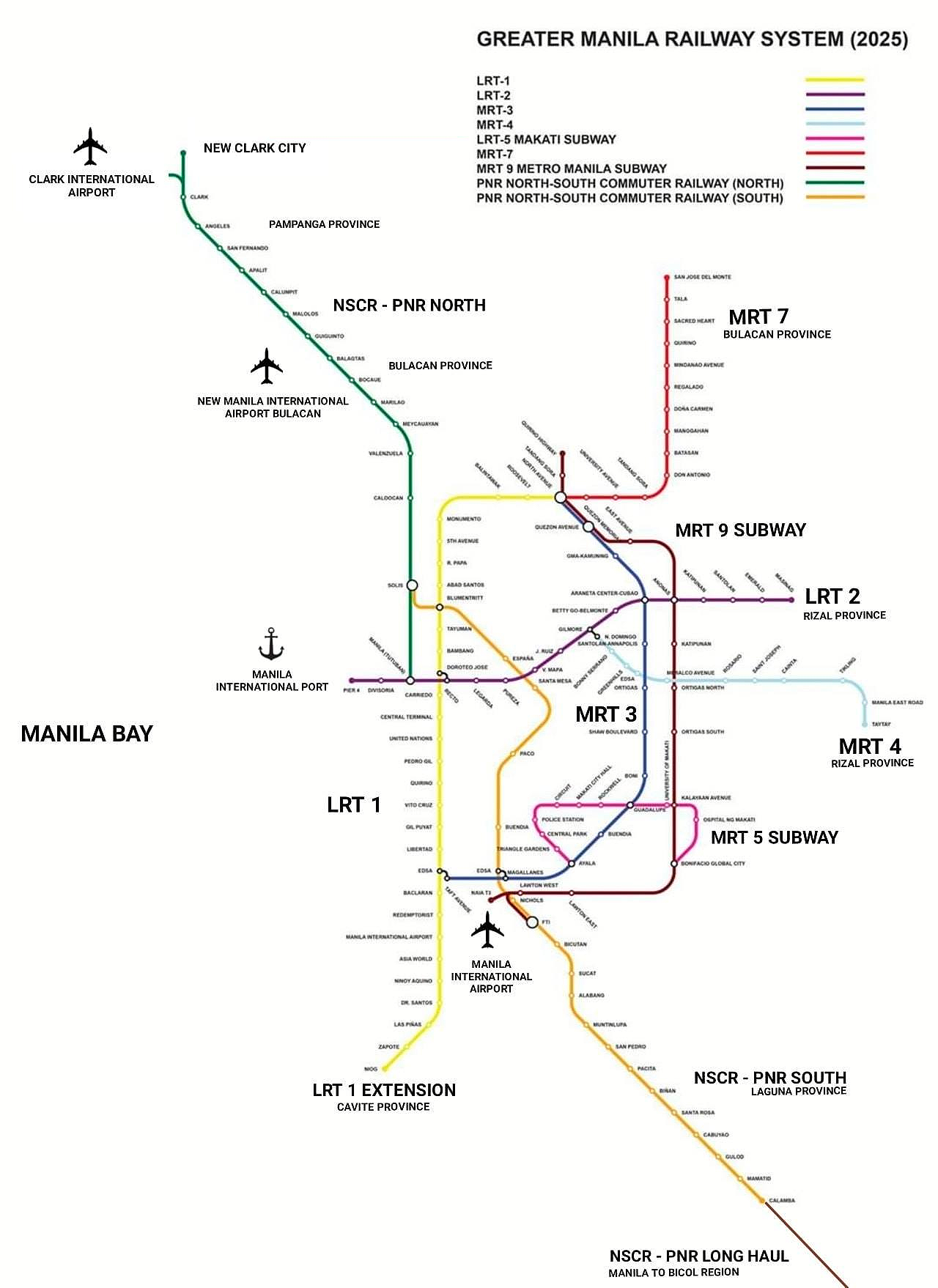The Future Of Manila Bay: A Sustainability Analysis

Table of Contents
Environmental Challenges Facing Manila Bay
The environmental degradation of Manila Bay is a complex issue stemming from a multitude of interconnected factors. Addressing these challenges requires a comprehensive and multi-faceted approach.
Water Pollution and its Sources
Manila Bay suffers from severe water pollution, primarily caused by:
- Industrial Waste: Untreated effluent from factories and industries discharges heavy metals (lead, mercury, cadmium), toxic chemicals, and other pollutants directly into the bay.
- Sewage: Inadequate sanitation infrastructure results in raw sewage and wastewater flowing into the bay, introducing pathogens and high levels of organic matter.
- Agricultural Runoff: Fertilizers and pesticides from agricultural lands contaminate the water, causing eutrophication (excessive nutrient enrichment) leading to algal blooms and oxygen depletion. This process significantly harms marine life.
Statistics reveal alarming trends: Water quality assessments consistently show dangerously high levels of coliform bacteria, exceeding safe limits for recreational use. This pollution has devastating consequences for the bay's biodiversity, harming fish populations, coral reefs, and other marine organisms.
Coastal Erosion and Habitat Loss
Rapid coastal development, coupled with rising sea levels, has led to significant coastal erosion in Manila Bay. This erosion threatens coastal communities and vital ecosystems.
- Mangrove Forest Loss: Mangroves, acting as natural buffers against erosion and providing crucial habitats for numerous species, have been heavily degraded due to land reclamation and deforestation. Their loss directly impacts fish populations and the overall resilience of the bay's ecosystem.
- Impact on Local Communities: Coastal erosion directly affects the livelihoods of fishing communities and those whose homes are situated along the shoreline, leading to displacement and economic hardship.
Climate Change Impacts
Climate change poses a significant threat to Manila Bay's future.
- Increased Typhoon Intensity: The bay is increasingly vulnerable to more frequent and intense typhoons, causing damage to coastal infrastructure and further exacerbating erosion.
- Saltwater Intrusion: Rising sea levels increase the risk of saltwater intrusion into freshwater sources, affecting agriculture and drinking water supplies.
Sustainability Initiatives and Government Policies
Recognizing the urgency of the situation, the Philippine government has implemented various initiatives aimed at Manila Bay rehabilitation.
Government Programs and Regulations
The Manila Bay Rehabilitation Program (MBRP) is a flagship initiative focused on cleaning up the bay and restoring its ecological integrity. This program includes:
- Clean-up drives: Regular clean-up operations to remove solid waste from the bay and its shorelines.
- Sewage treatment plant upgrades: Investments in upgrading and expanding sewage treatment facilities to reduce the amount of untreated wastewater entering the bay.
- Regulations on industrial discharges: Stricter enforcement of environmental regulations to reduce industrial pollution.
While these programs represent significant steps towards rehabilitation, ongoing challenges persist in ensuring effective implementation and consistent enforcement.
Community Involvement and Stakeholder Engagement
Successful rehabilitation relies heavily on community participation and stakeholder engagement.
- Community-based monitoring: Local communities play a vital role in monitoring water quality and reporting pollution incidents.
- Coastal clean-up initiatives: Citizen-led initiatives contribute significantly to waste removal and environmental awareness campaigns.
- Collaboration between government and NGOs: Effective partnerships are essential for coordinating efforts and maximizing impact.
Sustainable Solutions and Future Prospects for Manila Bay
Securing a sustainable future for Manila Bay requires a holistic approach encompassing various sustainable solutions.
Sustainable Tourism and Coastal Management
Promoting sustainable tourism practices can contribute to the bay's long-term health while supporting local economies.
- Eco-tourism development: Developing eco-tourism activities that minimize environmental impact and enhance visitor appreciation for the bay's natural beauty.
- Integrated coastal zone management: Implementing strategies for sustainable coastal development that balances economic growth with environmental protection.
Waste Management and Pollution Control Technologies
Investing in advanced waste management and pollution control technologies is critical.
- Wastewater treatment upgrades: Implementing advanced wastewater treatment technologies to remove pollutants more effectively.
- Solid waste management systems: Improving solid waste management systems to reduce the amount of waste entering the bay.
- Plastic pollution reduction: Implementing policies and programs to reduce plastic pollution, including phasing out single-use plastics.
Protecting and Restoring Biodiversity
Rehabilitating and protecting Manila Bay's diverse ecosystems is paramount.
- Mangrove reforestation: Planting mangrove forests to restore natural buffers against erosion and provide habitats for marine life.
- Marine protected areas: Establishing marine protected areas to safeguard critical habitats and biodiversity hotspots.
- Sustainable fishing practices: Promoting sustainable fishing practices to prevent overfishing and protect fish stocks.
Conclusion: Securing a Sustainable Future for Manila Bay
The future of Manila Bay hinges on addressing the complex interplay of environmental challenges and implementing sustainable solutions. This requires a collaborative effort involving government agencies, local communities, NGOs, and the private sector. While significant progress has been made through initiatives like the MBRP, sustained commitment and innovative strategies are crucial to achieving long-term sustainability. By adopting a multi-pronged approach that incorporates sustainable tourism, advanced waste management technologies, and robust biodiversity conservation efforts, we can safeguard Manila Bay's ecological integrity and secure its vibrant future for generations to come. Join the movement to protect Manila Bay. Learn more about how you can contribute to the sustainable future of Manila Bay and participate in initiatives that support its restoration. Together, we can secure a brighter future for Manila Bay.

Featured Posts
-
 La Rivalidad Agassi Rios Un Duelo Memorable En La Historia Del Tenis
May 30, 2025
La Rivalidad Agassi Rios Un Duelo Memorable En La Historia Del Tenis
May 30, 2025 -
 Guillermo Del Toros Frankenstein A Horror Film The Directors Verdict
May 30, 2025
Guillermo Del Toros Frankenstein A Horror Film The Directors Verdict
May 30, 2025 -
 Hhs Letter Sparks Debate Providers Question Transgender Treatment Protocols
May 30, 2025
Hhs Letter Sparks Debate Providers Question Transgender Treatment Protocols
May 30, 2025 -
 Public Outcry Massive Petition Aims To Strip Jon Jones Of Ufc Title
May 30, 2025
Public Outcry Massive Petition Aims To Strip Jon Jones Of Ufc Title
May 30, 2025 -
 Emission Integrale Europe 1 Soir 19 Mars 2025
May 30, 2025
Emission Integrale Europe 1 Soir 19 Mars 2025
May 30, 2025
Latest Posts
-
 Up To 30 Off Enjoy A Lavish Hotel Stay This Spring
May 31, 2025
Up To 30 Off Enjoy A Lavish Hotel Stay This Spring
May 31, 2025 -
 Book Now And Save 30 Off Lavish Spring Hotel Stays
May 31, 2025
Book Now And Save 30 Off Lavish Spring Hotel Stays
May 31, 2025 -
 The Reality Of Ai Navigating The Challenges Of Responsible Ai Development
May 31, 2025
The Reality Of Ai Navigating The Challenges Of Responsible Ai Development
May 31, 2025 -
 Luxury Hotel Spring Break 30 Off Your Stay
May 31, 2025
Luxury Hotel Spring Break 30 Off Your Stay
May 31, 2025 -
 Why Ai Doesnt Learn And How This Impacts Responsible Ai Practices
May 31, 2025
Why Ai Doesnt Learn And How This Impacts Responsible Ai Practices
May 31, 2025
